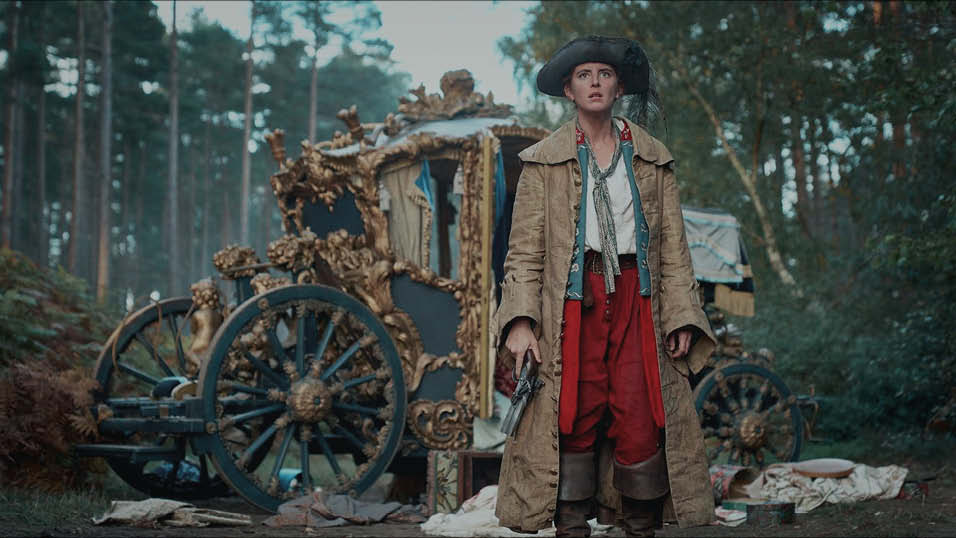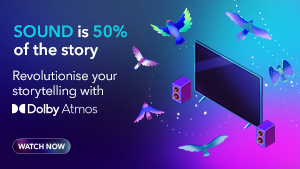Gramercy Park Studios’ Senior Sound Designer, Toby Griffin on taking automotive sound design to the next level.
Advertising for the motor industry has slowly shifted away from the VFX heavy commercials of the mid-noughties, leading to a new wave of story driven, human focussed, narrative. The big VFX-driven spots are great to work on, but you face a different set of challenges with some of the more subtle ads we’ve seen recently.
Regulations mean agencies have to think differently about how they advertise their cars, whereas motorsport broadcasters tend to have free reign to focus on speed, power and the romance of the sport.
I’ve been in the industry for over twenty years – the last three and a half of those at Gramercy Park Studios – recording the world’s most recognisable voices and designing sound for commercials, promos and short films. Although I’ve worked on campaigns for everything from kids toys, to luxury watches, I’m really in my element when my two passions, sound and cars, coincide.
From TV and online campaigns for clients including Volvo, Ford and Jaguar, to promos, title sequences and inserts for BBC, Sky and Channel 4, I’ve immersed myself in the world of automotive sound design. And being shortlisted as a finalist in this year’s Music and Sound Awards for creating the sound for the 2015 BBC F1 title sequence, topped off a great year.
Having been involved in nearly all the F1 feature promos for the BBC since 2009, I was excited to still be involved after the coverage moved to Channel 4 this year. The season launch film for Whisper Films, starring Jenson Button being dispatched out of an airplane along with his car, was extremely fun and challenging. With a little help from the VFX team at The Intro Partnership, The Drop launches Button out of the plane, landing safely on a track before speeding off at full throttle.
Due to the nature of the piece, a lot of green screen was used in the shoot, so large sections were devoid of sound. A good example is the McLaren being jettisoned from the Hercules. There are many elements to consider when building audio for a scene like this – the aircraft interior, the exterior, wind, engines, the catapult, parachute, Jenson’s reactions, the extraction sound of the car and the different camera perspectives. This is a fascinating part of the job.
I’m particularly interested in the small details. It’s often these things that convince the human brain that what it’s listening to is real and much like VFX, if it goes unnoticed, you’ve usually done a good job!
Of course, while the soul of any car lies in its brand heritage, its heart is the engine. And as many a sound designer has found out, it’s as important for the viewing public as it is for the client. As a petrol head, I’m very particular about using the correct engine sounds, especially when it involves historical motorsport. In the past, people would write and complain to the broadcaster if an engine sound was wrong on a promo.
Having worked on Formula 1 for so long, my team and I have amassed an extensive library of sounds, covering cars from the 1950s to present day hybrids. This has been built by us attending historic motorsport events to record classic F1 cars, crowds, commentary and general atmosphere.
For most jobs, I’m supplied a small amount of sync, so we often trawl through our library to find the relevant era, engine size and make for the cars in the missing sections.
It’s this attention to detail that creatives, directors and clients appreciate, keeping us on our toes whilst putting that knowledge of motorsport to good, if not slightly obsessive, use.
We recently worked with FP Creative and The Intro Partnership on a spot for Tag Heuer’s The Ayrton Senna Collection. The viewer is on board with Senna, looking back at him as he completes one of his legendary qualifying laps at Monaco. Reflections bounce off his visor as he flies through the streets. Although I was supplied some onboard recordings from an F1 car, it wasn’t from a lap of Monaco, so I manipulated the sound to emulate the revs and gear changes you would expect to hear around the famous Monte Carlo circuit.
These creative requirements coupled with the range of jobs that come through the door means my team and the sound department need the right tools to keep up with their ambitions. Our current “go to” favourites include the iZotope RX4 and Iris plug-ins for Avid Pro Tools.
RX4 is a clever program that enables the removal of unwanted artefacts from a recording, things such as clicks, hum, distortion and reverb. It can even strip the atmos from a voice recording. With little control over the quality of sound files supplied to us, software like RX4 is essential. Iris is a sample based synthesizer that enables quick editing, processing and layering and processing of samples, with often surprising results. We can import our own files and alter the sound beyond recognition within a few seconds. With limited creative time in sessions, we’ll often experiment with Iris in our spare time, and add the results to our sound design library for later use.
Being involved with projects at a very early stage enables us to advise clients and the production teams about things to be aware of from an audio perspective, during the shoot. Which means we’re able to have an influence on the quality of audio captured on the day. Audio is often the last stage of the post production process, but by getting involved earlier, we can get better quality results, keeping our clients happier whilst improving the quality of the final mix."
Toby Griffin
Share this story

















